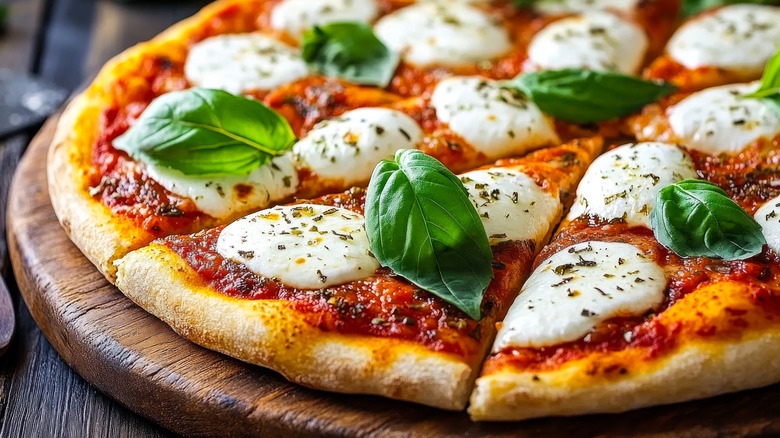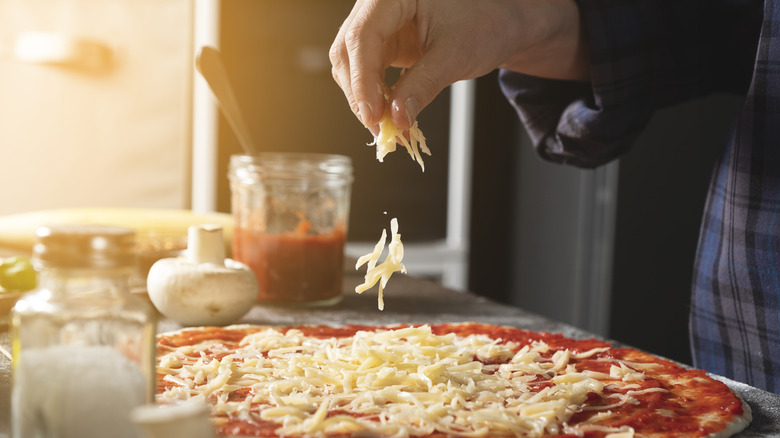Out Of Yeast? You Can Use Beer To Make Pizza Dough Instead
The pantry panic always hits at the worst time, doesn't it? You've promised everyone a homemade pizza for dinner, you've prepped the toppings, the oven is hot (you're a pro, so you already know to use the broiler), and then you realize there's no yeast in the house. But, before you reach for the takeout menu, have a look inside your fridge. The bottles of beer in there might just save your dinner plans.
As it turns out, beer contains active yeasts that can work as a substitute for baker's yeast in pizza dough. The science is simple: the fermentation process required to make beer leaves behind live yeast cells that continue to do their thing long after it's been bottled, and this is the same yeast that makes dough rise. While commercial beers vary in yeast content, they all should provide enough to create a decent pizza crust with many cooks claiming it actually yields a better, fluffier result. But there's more. Beyond stepping in as a yeast substitute, beer could also add a whole new flavor complexity to your dough. The malt is a source of sweet sugar, while the hops are the key ingredient that make beer bitter – together they work really well to balance each other out.
How to make the perfect beer pizza
Using beer in pizza dough is easy. First, you want to remove the beer from the fridge and let it sit for three to four hours so it isn't too cold. Then follow your favorite pizza dough recipe, replacing the water with beer, before you cover the dough and leave it alone. The dough needs to rise for longer as beer yeast works slower than baker's yeast. If you had to use cold beer, you can put the bowl near the warm oven to bring it to room temperature faster. We promise it'll be worth the wait.
The beer selection matters too. Using a lighter lager is recommended but feel free to experiment with stronger, hoppy IPAs or stouts if they're more your thing. An exciting idea might be to pair your toppings with your beer selection. If you're opting for a dark, strong beer like a stout, top your pizza with caramelized onions and mushrooms to really lean into the earthy flavors. Or, if you're keeping it light with a pale lager, pair it with fresh toppings like basil and mozzarella. And for a better homemade pizza, try adding something sweet too.
Make sure you preheat your oven to a high setting (ideally 500 degrees Fahrenheit). Getting the heat as high a heat as possible is key to creating those cherished air pockets and crispy edges that will take your homemade pizza to whole new levels.

